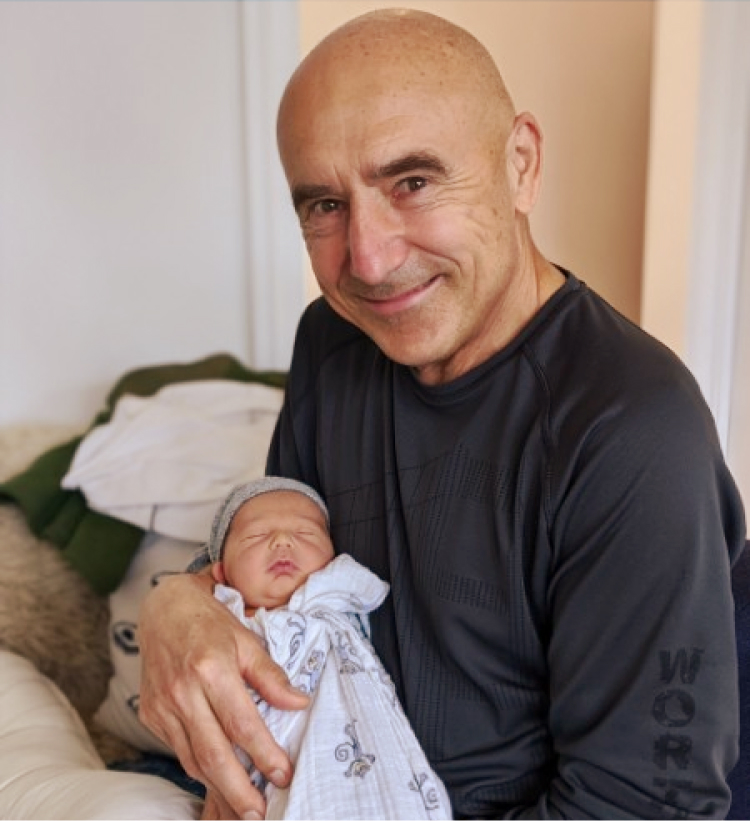


Frozen Embryo Transfer
If you already have embryos frozen — or want to pause after retrieval and transfer at a later time — Bay IVF offers tailored FET cycles that place your comfort, clarity, and success first.


A frozen embryo transfer (FET) is the process of thawing previously cryopreserved embryos and transferring them into your uterus during a later cycle, when your body and lining are optimally prepared.
At our Bay Area clinic, we use modern vitrification techniques and personalized protocols to make the process as smooth and effective as possible.

Why Choose FET?

There are several reasons why a frozen embryo transfer might be the right choice for you:
- You already have viable embryos frozen from a prior cycle and are ready to move forward when timing, finances, or personal readiness align.
- You or your doctor chose to freeze all embryos (a “freeze-all” approach) to allow your body to recover from stimulation before transfer.
- You produced more embryos than you need now and want to use them later, rather than start fresh.
- You’d like to delay transfer for personal, health, or logistical reasons while preserving embryo quality.
- A frozen cycle may allow a more optimal uterine environment (without high hormone levels from stimulation) — potentially improving outcomes.



With vitrification, the embryo survival rate is very close to 100%.
How the FET Process Works at Bay IVF

Endometrial stimulation
Estrogen (skin patches) + progesterone (mostly vaginal capsules) are used to build the lining. Your treatment is always individualized. You will receive your personalized endometrial stimulation calendar.

Embryo thawing procedure
The thawing procedure is carefully timed and performed at our Clinic on the day of your FET.

Culture of the thawed embryo(s)
The thawed embryos are being prepared for assisted hatching and embryo transfer.

Assisted hatching of embryos
A laboratory procedure that creates a “weak spot” in the eggshell of an embryo. This technique enhances the chances that the embryo will hatch from its shell and successfully implant.

Embryo transfer
One or two embryos are carefully loaded into the tip of a thin embryo transfer catheter. The catheter is then guided through the cervix to the top of the endometrial cavity, where the embryo(s) are gently released. This is a brief, gentle procedure.

Embryo implantation
After transfer, you’ll receive guidance on what to expect, how to support implantation (medications, lifestyle recommendations), and then follow-up for your pregnancy test and early monitoring.

What to Expect Timeline & Visits

- FET cycles have significantly fewer visits than a full IVF cycle, since you’re not going through egg retrieval.
- The overall process from lining preparation to transfer often only takes 4–6 weeks.
- You’ll know your schedule in advance, and we’ll keep it as streamlined as possible so you can continue your everyday life with minimal disruption.

Success Factors & Considerations

What matters the most:
- The quality of the embryos when they were frozen (younger age at creation and strong blastocyst grade improve outcomes).
- The health and preparedness of your uterus (lining thickness, hormone balance).
- Your overall health, age, and lifestyle factors.
Some key considerations:
- Having frozen embryos doesn’t guarantee success — each transfer still depends on many variables.
- The number of embryos available and their stage matter — fewer or lower-grade embryos may reduce options.
- Even though embryo survival after vitrification is very high, there is still a small chance of loss during thaw.
- Deciding how many embryos to transfer: our goal is often a single-embryo transfer to reduce twin risk while maintaining high success.
- Once the placenta produces enough estrogen and progesterone, your medications are discontinued. The pregnancy is then indistinguishable from natural conception.

Why Bay IVF Makes a Difference

- We are a boutique Bay Area clinic where you will be treated as a person, not a case number — Dr. Polansky and his small team oversee every step.
- Our lab uses the latest vitrification and embryo culture protocols to optimize survival and success.
- We provide clear, upfront communication — you’ll know your plan, number of visits, timeline, and costs before you begin.
- We’re local and accessible — so you don’t have to travel far for monitoring or support.

Your Next Step

- Call or text us at 📞 650 322 0500 to schedule your in-person or a complimentary video consultation with Dr. Polansky.
- You will review the status of your frozen embryos and the transfer options.
- Determine the best protocol for your lining and timing.
- Receive a personalized roadmap, including visits, medications, and a cost estimate.
- Have your questions answered in a warm, no-pressure setting
You’re not just using frozen embryos — you’re continuing your journey with intention and clarity. We’re here when you’re ready.

Bay IVF Early Pregnancy Heartbeat

Meet Your Doctor

- Dr. Polansky received his medical diploma from Charles University in Prague, the Czech Republic, in 1978.
- After completing his OB/GYN residency at Jewish Hospital in Saint Louis, MO, he graduated from the Reproductive Endocrinology and Infertility (REI) fellowship at Stanford University in 1985.
- In the same year, he co-founded the Stanford IVF Clinic.
- Dr. Polansky obtained board certification in Obstetrics and Gynecology in 1986 and became REI subspecialty board certified in 1988.
- In 1987, he left Stanford University and established Nova IVF.
- In 2011, he founded Bay IVF, where he provides advanced fertility treatments with a holistic approach, utilizing state-of-the-art techniques.
- Dr. Polansky personally performs ultrasound examinations, egg retrievals, embryo transfers, and ovarian and endometrial stimulations for his patients.
- He is deeply committed to his patients and is always ready to lend a helping hand.
Frank Polansky, M.D.



Initial Appointment Questions
When you call to schedule your consultation, one of our Front Office Coordinators will ask you a short series of simple questions regarding your reproductive history. You will also have an opportunity to ask any financial questions.
Your Initial Visit at Bay IVF
A new patient appointment at a fertility clinic can be stressful. Our goal is to make your initial visit as friendly and relaxing as possible. We encourage you to ask questions at every step of the process to make you feel comfortable and informed.

When You Arrive
You will be welcomed by one of the clinic’s receptionists. One of our nurses will measure your height and weight and take your blood pressure.

Meet Your Doctor
Dr. Polansky will ask you a series of clarifying questions and then provide you with a summary of the factors contributing to your infertility.

Ask Your Questions
You will then have a discussion with him about the most suitable reproductive treatment(s) for you. During this time, you will have the opportunity to ask any questions you may have.

Exam Room
One of the nurses will escort you to an examination room. Your examination will begin with listening to your lungs and heart.

Ultrasound of the Ovaries
The next step is a pelvic ultrasound to examine the uterus and ovaries. This ultrasound will help determine the number of antral follicles present within the ovaries.

Financial Part
After that, you will discuss the financial aspects of your treatment with one of the financial advisors, including potential financing options.

Support 24/7
If you have any questions after leaving the clinic, please feel free to reach out to us by phone, text, or email. Open and discreet communication is an integral part of the care we provide at Bay IVF.

What About Time?
Your entire visit is expected to last approximately one hour.


Schedule Your Initial Consultation With Dr. Polansky
Online (no cost) or In-Person
Call or Text Us: Call or text us at 📞 650 322 0500
You can also complete the form below to request your initial consultation.


Let’s talk about your next step







